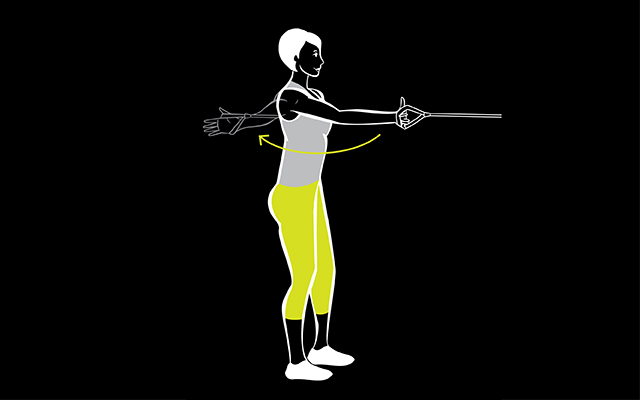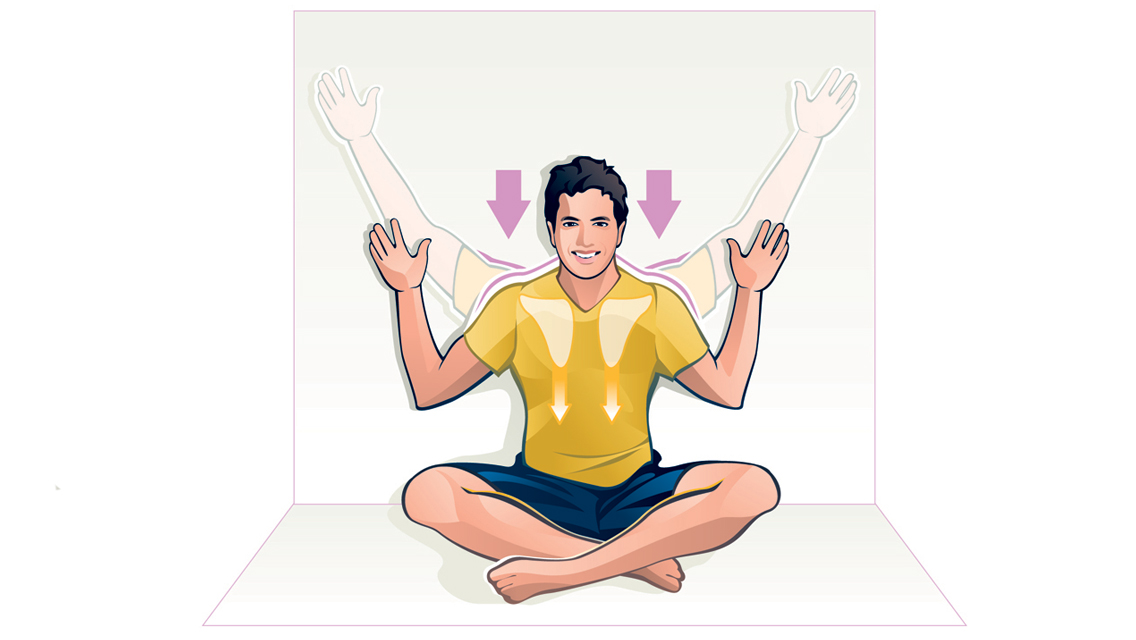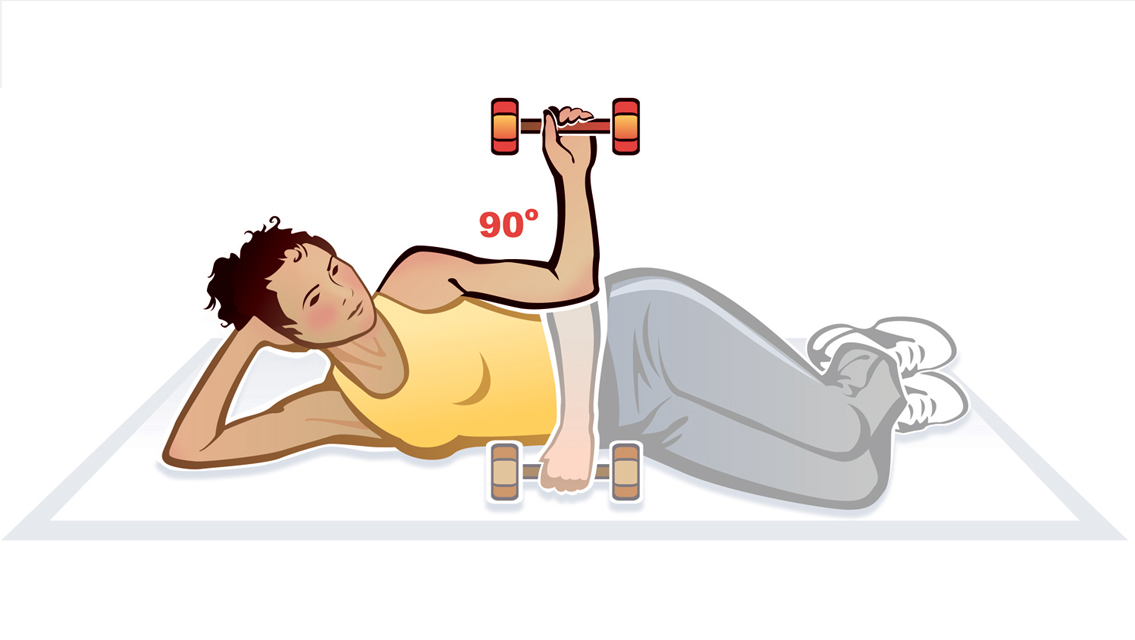Editor’s note about this series: Building a strong core is a foundational goal in many fitness programs, but strong limbs also play a critical role in your overall health and fitness. That’s why it’s important to look at the health of all of your joints and muscles — not just the ones that wrap around your middle. In our “Beyond the Core” series, we share exercises designed to strengthen and protect your feet, knees, shoulders, and neck.
We tend to consider the shoulder as one joint, but there are actually five joints that work to move your arm at this attachment point. Among these are the glenohumeral (GH) joint, a ball-and-socket joint that attaches your arm to your body and moves the arm through space, and the acromioclavicular (AC) joint, which connects the top of your shoulder blade to your collarbone and allows for the last degrees of overhead motion.
The other joints of the shoulder girdle help you perform a variety of movements, including squeezing your shoulder blades together, shrugging, and rotating your shoulder blades forward. With all this potential for movement, there’s not much that your shoulders aren’t designed to do.
“Your shoulders and arms should be strong enough to hold the weight of your entire body,” says Katy Bowman, MS, a biomechanist in Sequim, Wash., and author of several books on human movement, including Move Your DNA. “But instead, a lot of people have limited function, stiffness, and pain in their shoulders. Shoulders are probably the most neglected part of our movement system.”
They’re also one of the most abused, because we spend a lot of time with our backs and shoulders forward and rounded.
Over time, this can result in a number of postural changes, including kyphosis (rounding of the upper spine), protracted (wide apart) and downwardly rotated shoulder blades, and internally rotated shoulders.
All of these factors can limit overhead mobility and lead to compensation, increasing your risk of injury.
“In order to perform overhead movements, you need to get your spine into extension, the shoulder blades need to rotate up, and the arm needs to lift up,” says Dean Somerset, CSCS, an Edmonton-based exercise physiologist who specializes in injury prevention and rehab.
“If you’re intent on doing an overhead press but you don’t have sufficient shoulder mobility to get into an overhead position, you’re going to end up arching your back and using your neck, and you won’t be able to effectively use your core,” he says.
Experts recommend addressing — and preventing — this scenario by doing extension work for the thoracic spine, stretching the front of the shoulders and chest, and strengthening the stabilizer muscles of the back and shoulders.
The following exercises lack the wow factor of movements like pull-ups and bench presses, but they’ll keep your shoulders safe and healthy so you can do those bigger movements.
If you’re able to reach overhead comfortably, Bowman recommends doing this every time you walk through a doorway: Reach your arms over the door frame while keeping your ribs down. “If you do this for just five seconds each time, you will be changing your body,” she says.
The Moves
Floor Angels

- Lie on your back with a pillow or folded blanket to bolster your head and shoulders.
- Stretch your arms out to a T-position, elbows slightly bent and palms facing up. Hold for 20 to 30 seconds.
- Then begin to slowly move your arms up and down, as if making snow angels. Slide your arms as high as comfortably possible, then slide them back to the starting position.
- Continue at a gentle pace for up to five minutes, avoiding pain or pinching.
Resistance Band One-Arm Reverse Fly

- Anchor one end of a light resistance band to a secure surface at shoulder height or higher. Slip your right hand through the unattached handle, pressing the back of your hand against the handle. (You won’t grasp the handle, but it will be secured in the webbing of your thumb.) Step back until you feel slight tension in the band.
- Press the back of your hand against the handle to pull it back and down, ending with your thumb pointing backward.
- Return to your starting position.
- Perform 12 reps. Switch sides.
This originally appeared as part of “Beyond the Core” in the print version of the March 2017 issue of Experience Life.




This Post Has 0 Comments